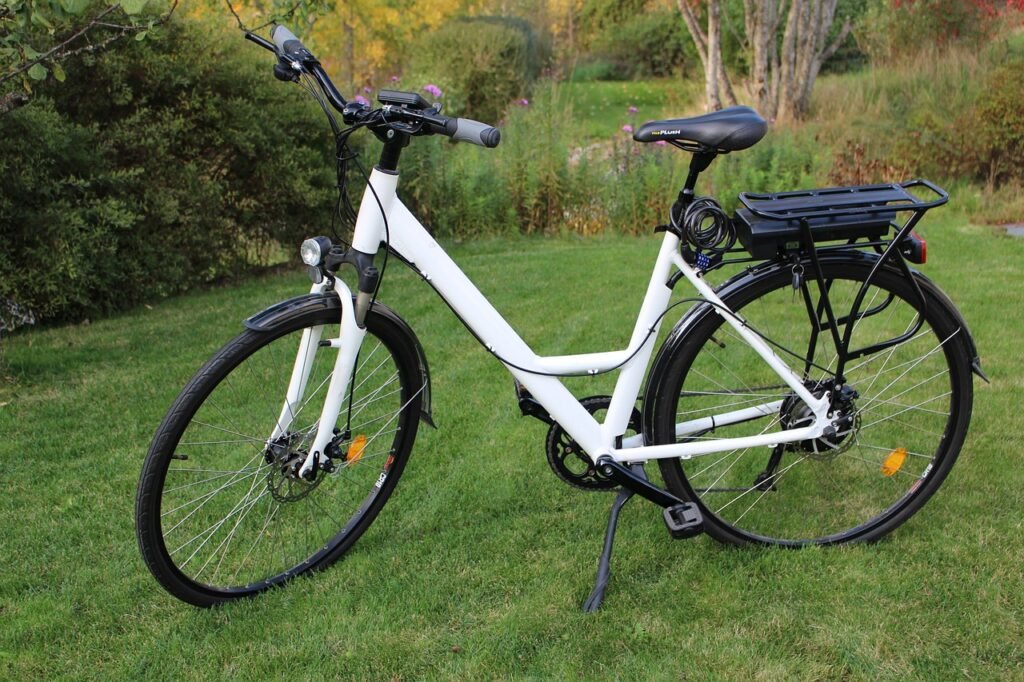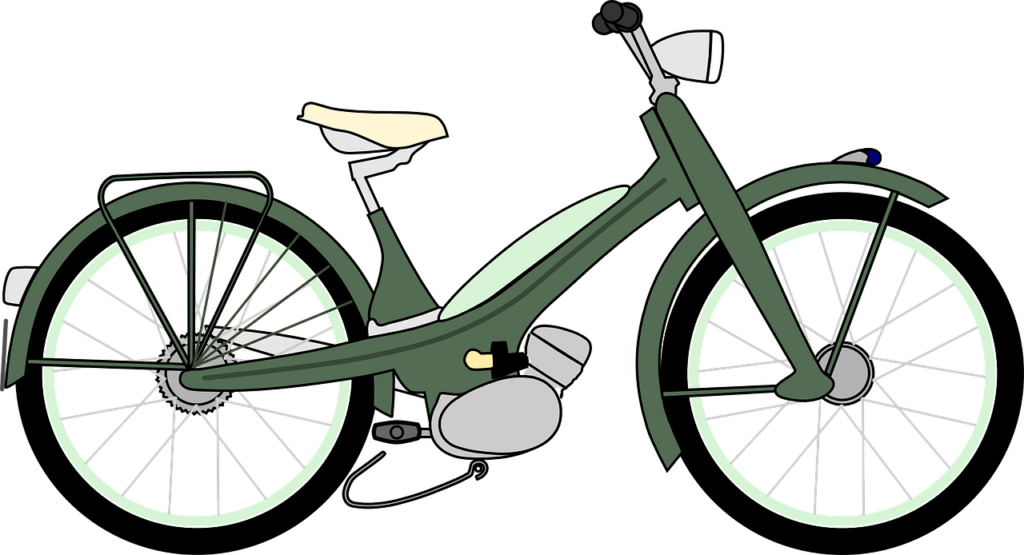
Electric bikes have become increasingly popular modes of transportation in recent years. With their ability to provide an extra boost of power while pedaling, they offer a convenient solution for individuals of all ages, including children and seniors. However, the question remains: are electric bikes truly safe for these two vulnerable groups? In this article, we will explore the potential risks and benefits of electric bikes for children and seniors, shedding light on the important factors to consider when it comes to their safety on these innovative two-wheelers.
Are Electric Bikes Safe for Children and Seniors?
Electric bikes have become increasingly popular in recent years, offering a convenient and eco-friendly alternative to traditional bicycles. However, when it comes to the safety of children and seniors, there are several key considerations to keep in mind. In this comprehensive article, we will explore the safety aspects of electric bikes for both children and seniors, compare them to traditional bicycles, highlight their benefits, and provide tips for choosing and using electric bikes safely.

Safety Considerations for Children
When considering electric bikes for children, it is essential to take into account various factors to ensure their safety on the road. These considerations include:
1. Age Appropriateness of Electric Bikes
One of the primary considerations is determining the appropriate age for children to safely operate electric bikes. While there is no specific age limit, it is crucial to consider a child’s physical and cognitive development. Electric bikes are typically recommended for children aged 13 and above, but this can vary depending on individual maturity and experience.
2. Size and Fit of Electric Bikes
Ensuring that an electric bike fits a child properly is crucial for their safety. A bike that is too large or too small can affect their ability to control the bike effectively. It is essential to choose an electric bike that allows the child to comfortably reach the handlebars and pedals while maintaining proper posture.
3. Speed and Power Limitations
Electric bikes come with various speed and power settings. It is essential to select an electric bike with speed and power limitations appropriate for the child’s abilities. Starting with lower settings and gradually increasing them as the child gains confidence and experience can help enhance their safety.
4. Rider Skills and Experience
Before allowing a child to ride an electric bike, it is crucial to evaluate their riding skills and experience. Children should have a strong foundation in traditional bicycle riding and possess basic road awareness before transitioning to an electric bike. Enrolling them in bike safety and skills training programs can further enhance their competence and safety.
5. Traffic Awareness and Road Safety
Teaching children about traffic awareness and road safety is paramount when introducing them to electric bikes. Children should understand and follow traffic rules, including using appropriate signals when turning, looking out for pedestrians, and being cautious of vehicles around them. Emphasizing the importance of situational awareness and safe riding practices is essential.
6. Helmets and Protective Gear
Just like traditional bicycles, wearing helmets and other protective gear is crucial for children riding electric bikes. Helmets should fit properly and be worn consistently to provide adequate head protection. Additionally, knee and elbow pads can help minimize injuries in case of accidents or falls.
Safety Considerations for Seniors
Seniors also need special consideration when it comes to electric bikes. Aging bodies and potential health conditions require additional precautions to ensure their safety. The following considerations should be taken into account:
1. Physical Abilities and Balance
Seniors should assess their physical abilities and balance before opting for an electric bike. These bikes require a certain level of physical fitness and stability to operate safely. If a senior experiences difficulties with balance or has limited physical capabilities, alternative mobility options may be more appropriate.
2. Health Conditions and Medications
Certain health conditions and medications can affect a senior’s ability to ride an electric bike safely. It is crucial to consult with a healthcare professional to evaluate any potential risks or limitations related to their specific health condition or medication regimen. Ensuring that medication side effects, such as dizziness or impaired coordination, do not interfere with safe riding is vital.
3. Strength and Stamina
Electric bikes provide power assistance, but seniors should still possess a reasonable level of strength and stamina to handle the bike effectively. Riding an electric bike requires some effort, especially when navigating hilly terrain or strong headwinds. Seniors should evaluate their strength and stamina to ensure they can safely control the bike without exhausting themselves.
4. Vision and Hearing
Impaired vision or hearing can significantly impact a senior’s ability to navigate the road safely. It is crucial to have regular vision and hearing tests to ensure the ongoing ability to detect potential hazards. Seniors must have clear vision and hearing to maintain situational awareness and promptly react to traffic and road conditions.
5. Electric Bike Features for Senior Riders
Manufacturers have recognized the unique needs of senior riders and have introduced specific features to enhance their safety and comfort. These features include step-through frames for easy mounting and dismounting, wider and more comfortable seats, and ergonomic handlebars for better grip and control. Seniors should look for electric bikes that cater to their specific requirements.
6. Training and Riding Skills
Seniors who are new to electric bikes should consider participating in training programs specifically designed for older riders. These programs focus on teaching essential riding skills, road safety, and proper bike handling techniques. By acquiring the necessary skills and knowledge, seniors can ride their electric bikes safely and confidently.

Comparing Electric Bikes to Traditional Bicycles
To understand the safety aspects of electric bikes better, it is essential to compare them to traditional bicycles. The following points highlight the differences and advantages of electric bikes:
1. Speed and Power Assistance
Electric bikes offer power assistance, allowing riders to travel at higher speeds with less effort. This can be advantageous for children and seniors, as it reduces the physical strain and enables them to keep up with traffic more easily. However, it is crucial to strike a balance and ensure that the speed remains controlled and safe.
2. Ease of Riding and Reduced Physical Strain
Electric bikes require less physical effort compared to traditional bicycles. This is particularly beneficial for seniors who may have limited strength or stamina. The power assistance provided by electric bikes offers a more enjoyable and less strenuous riding experience.
3. Safety Features and Technology
Electric bikes often come equipped with advanced safety features, such as integrated lights, reflective elements, and horns or bells. Additionally, some models incorporate technology like automatic brake lights, turn signals, and speed limiters. These features contribute to increased visibility and safety on the road for both children and seniors.
4. Battery Range and Charging Considerations
Electric bikes are powered by batteries, and their range varies depending on the model and usage. It is essential for both children and seniors to be aware of the battery range and plan their rides accordingly to avoid running out of power. Additionally, ensuring that the battery is adequately charged before each ride is crucial.
5. Cost and Maintenance Considerations
Compared to traditional bicycles, electric bikes can be more expensive both upfront and in terms of maintenance. It is essential to consider the cost of purchasing and maintaining an electric bike, including battery replacements and regular servicing. However, the potential savings in transportation costs and increased accessibility may outweigh these considerations for some riders.

Benefits of Electric Bikes for Children and Seniors
Electric bikes offer numerous benefits for both children and seniors, including:
1. Increased Mobility and Independence
For children and seniors alike, electric bikes provide increased mobility and independence. They allow children to travel longer distances and explore their surroundings, while seniors can maintain their mobility and engage in outdoor activities without excessive physical strain.
2. Health and Fitness Benefits
Although electric bikes provide power assistance, they still require some level of physical exertion. They offer a low-impact form of exercise that can improve cardiovascular health, muscle strength, and overall fitness. Regular riding can contribute to weight management, joint mobility, and better mental well-being.
3. Environmental Sustainability
Electric bikes are a more environmentally friendly alternative to traditional vehicles. By opting for electric bikes, both children and seniors can contribute to reducing pollution and carbon emissions. This eco-conscious choice supports a cleaner and more sustainable future.
4. Cost-Efficiency and Savings
Electric bikes can offer significant cost savings in terms of transportation expenses. They eliminate the need for fuel and reduce maintenance costs associated with cars or motorcycles. Both children and seniors can benefit from these cost savings, making electric bikes a viable and economical option.
5. Social Engagement and Well-Being
Riding an electric bike can provide opportunities for social engagement and mental stimulation. Children can ride together with friends or participate in organized biking events, fostering social connections. Similarly, seniors can join biking groups or enjoy scenic rides, promoting a sense of community and overall well-being.

Tips for Choosing and Using Electric Bikes Safely
To ensure the safety of children and seniors when using electric bikes, it is essential to follow these tips:
1. Selecting the Right Electric Bike
Carefully consider the age appropriateness, size, and fit of the electric bike for children and seniors. Consult with professionals at reputable bike shops to ensure the bike meets their specific needs and safety requirements. Take test rides and compare different models before making a final decision.
2. Ensuring Proper Bike Maintenance
Regular maintenance is crucial for the safe operation of electric bikes. Pay attention to tire pressure, brake functionality, and overall bike condition. Follow the manufacturer’s guidelines for battery care and charging. If unsure, seek professional assistance for maintenance and repairs.
3. Wearing Appropriate Safety Equipment
Helmets should be worn at all times when riding electric bikes, regardless of age. Additionally, children and seniors should consider wearing knee and elbow pads for added protection. Reflective clothing or accessories can enhance visibility, especially when riding during low-light conditions.
4. Educating Children and Seniors about Bike Safety
Children and seniors should undergo education and training programs that focus on bike safety and riding skills. Teach them about traffic laws, road awareness, and proper riding etiquette. Encourage open communication about potential risks and challenges they may face while riding.
5. Following Traffic Laws and Riding Etiquette
Both children and seniors should follow traffic laws and regulations while riding electric bikes. This includes obeying traffic signals, using designated bike lanes where available, and respecting pedestrians’ right of way. Encourage safe and considerate riding behavior to minimize the risk of accidents.

Conclusion
Electric bikes can provide a safe and enjoyable mode of transportation for both children and seniors. By considering the age appropriateness, rider skills, and safety features, the potential risks associated with electric bike riding can be minimized. Electric bikes offer numerous benefits, including increased mobility, health benefits, and environmental sustainability. By following safety guidelines and selecting appropriate equipment, children and seniors can enjoy the many advantages of electric bikes while keeping safety as a top priority.




















